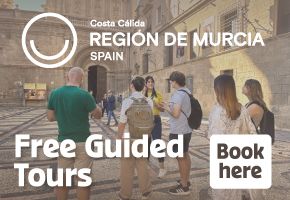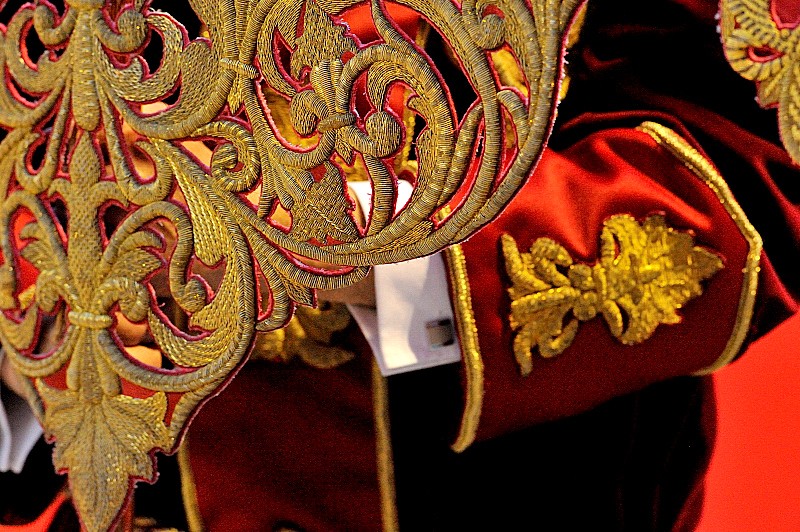
To be listed on the CAMPOSOL TODAY MAP please call +34 968 018 268.
The MuPaEn embroidery museum in Lorca, the Paso Encarnado
This is one of four museums dedicated to the embroideries of the Semana Santa processions in Lorca
The Museo de Bordados del Paso Encarnado, often known by the acronym MuPaEn, is one of four museums in Lorca dedicated to the remarkable embroideries associated with the biblical processions which are held in Semana Santa (Easter Week) every year in the city of Lorca.
The Paso Encarnado, officially entitled the Archicofradía del Santísimo Cristo de la Sangre, is one of the four brotherhoods which take part in these processions, and have contributed to the celebrations being named an Item of International Tourist Interest and an official candidate for UNESCO Intangible Cultural Heritage of Humanity status.
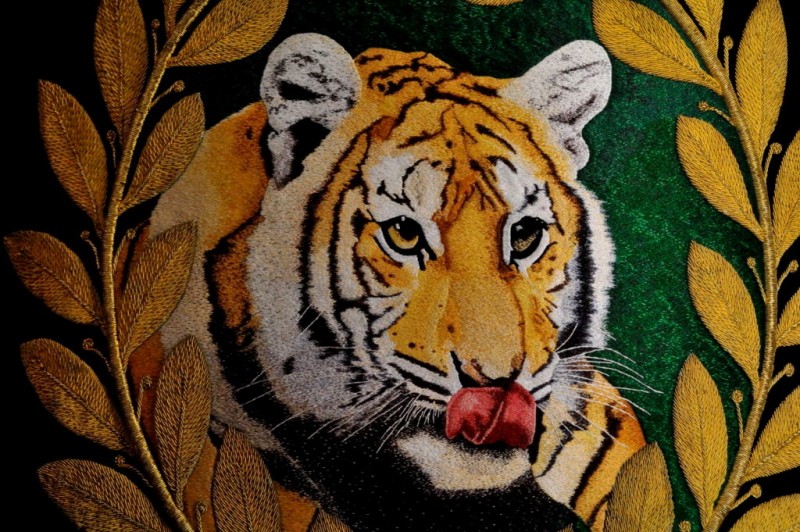
Although there is no substitute for actually attending the Semana Santa biblical processions, visiting these four museums is a fascinating way to spend a day in Lorca, as the sheer scale of the endeavour undertaken by the embroiderers who lavish thousands of hours on each individual piece has to be seen to be believed, and anybody who has any interest in needlework or art will be appreciative and humbled by what they find in these four museums.
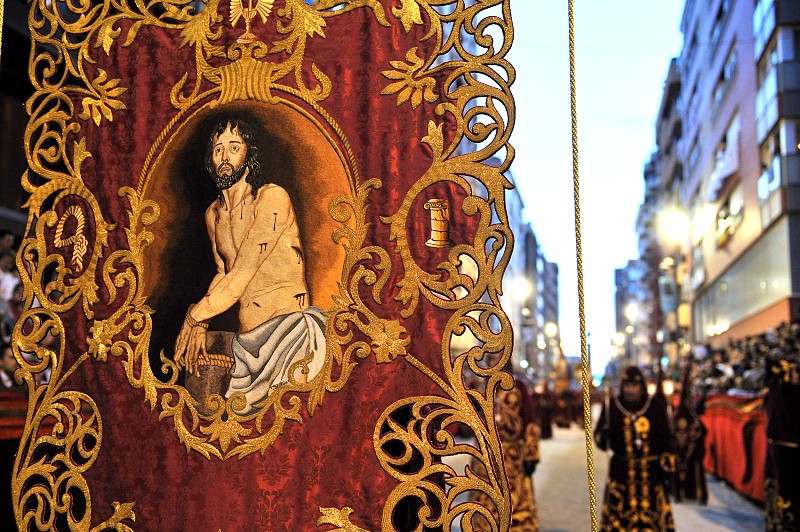
Each of the brotherhoods has its own collection of sculptural pieces and embroideries, and although the act of parading these religious images through the streets of Lorca is undertaken across Spain, the creation of embroidered tunics and capirotes (the tall, pointed headwear worn by the penitents), standards and cloaks is undertaken on a scale unparallelled elsewhere.
Lorca first began to include "biblical elements" in its Semana Santa processions during 1855, and gradually these have assumed an almost biblical proportion of their own, the two largest and oldest brotherhoods, the Hermandad de Labradores and the Real e Ilustre Archicofradía de Nuestra Señora del Rosario, (the Paso Blanco and Paso Azul) engaged in an intense rivalry to create the most spectacular embroideries and floats for the parades.
These two brotherhoods dominate the parades, but the Paso Encarnado also holds a fine collection of embroideries, and this museum is the logical place to begin a tour of all four, as it is located on the opposite side of the river to the other three museums.
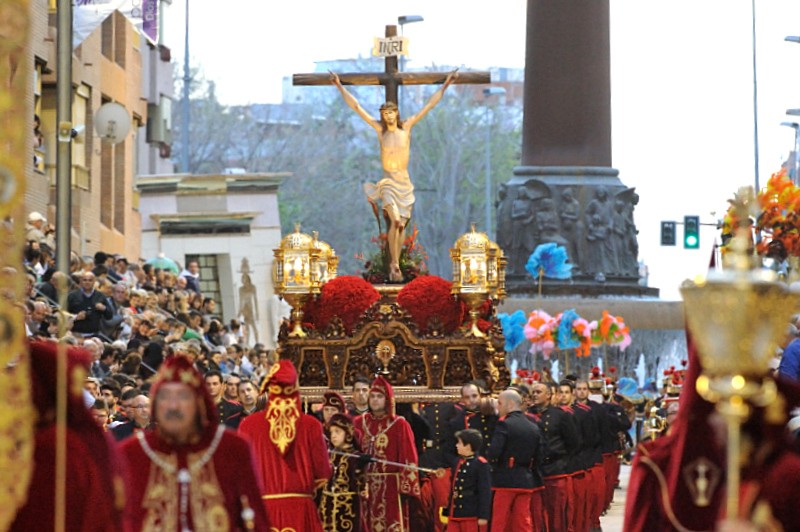
The history of the Paso Encarnado in Lorca
The most distant origins of the brotherhood lie in the late 16th century, when monks of the Franciscan Order inspired the cult of the Sangre de Jesucristo Crucificado (the blood of Christ on the Cross) and founded the tradition of a procession on Maundy Thursday.
By 1734 the brotherhood had received the title “Archicofradía”, and just two years later owned its own chapel in the old Monastery of San Francisco in the Puerta de Nogalte, which was founded in 1561 and is now home to the Paso Azul.
For approximately 40 years starting in 1863 the brotherhood joined forces with the Hermandad de Nazarenos Coloraos, who were based in the Convento de San Diego. Responding to the growing tradition of spectacular biblical processions in Lorca, by 1888 the brotherhood included a Roman cavalry and a band to provide musical accompaniment, but this association ended in 1904 and the whole group was disbanded.
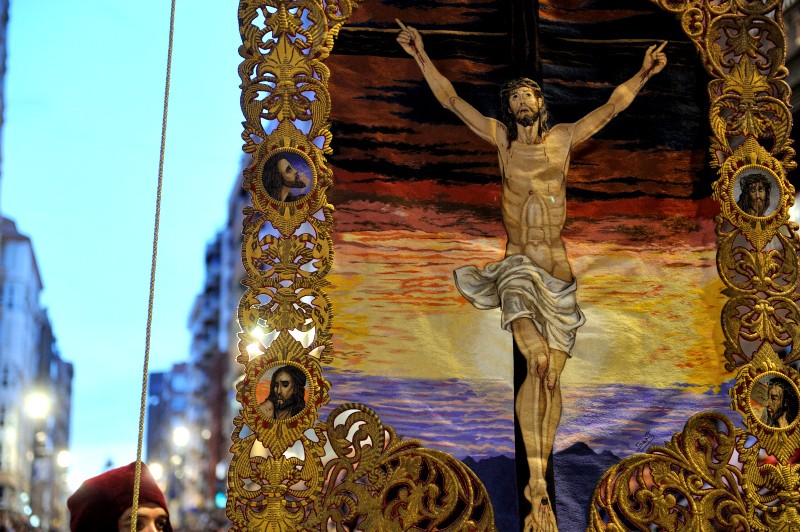
In 1935 it was re-founded in the Convento de San Diego and for the first time organized the procession which is still held in silence at midnight on Maundy Thursday, as Good Friday begins. After the Civil War (1936-39) the Archicofradía del Santísimo Cristo de la Sangre moved to the church of San Cristóbal in 1940, and since 1948 its main religious statue has been the image of Cristo de la Sangre sculpted by José Jerique.
A new drum and cornet band was formed in 1955, and since then the range of floats and accoutrements owned by the Paso Encarnado has grown from year to year. Robes embroidered with silk were created for the leaders of the drum and cornet sections, and gradually the traditions of elaborate embroidery took root in this brotherhood as they had in others previously.
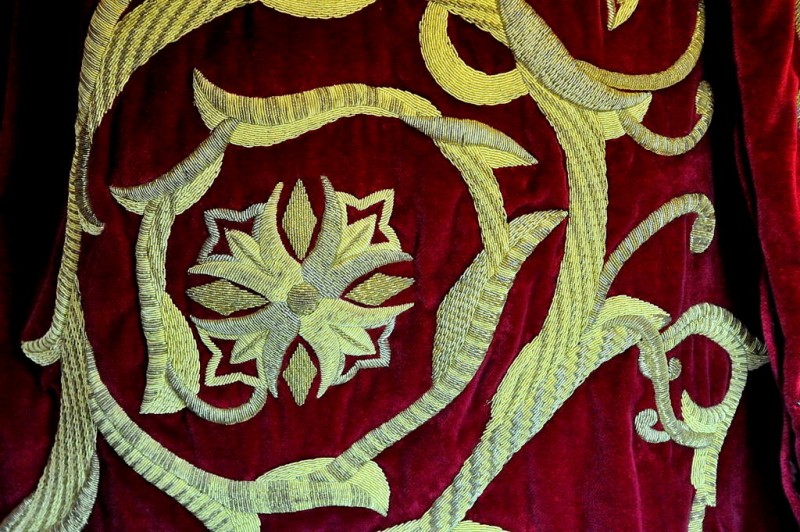
In 1990 the five Via Crucis events on the Fridays of Lent were held for the first time in the district around the church of San Cristóbal, a custom which has been maintained ever since, and in 1999 the embroidery workshop of “La Peña” was created.
As a point of curiosity, in the past the tableaux paraded by the brotherhood were borne on the shoulders of men from the Mallorca XIII infantry regiment, which was formed in 1682 and eventually disbanded in 1995. This military connection is still reflected by the fact that the present “costaleros” wear an old infantry uniform similar to the one in which Alfonso XII and the current King, Felipe VI, solemnly swore allegiance to the Spanish flag.
The home of the MuPaEn
The Museo de Bordados del Paso Encarnado is at Calle Eulogio Periago nº 2 in the north of the city of Lorca, where it opened in March 2002 with the blessing of the Bishop of Cartagena, Manuel Ureña.
The building was renovated in October 2009, and at the same time the way in which items are displayed was updated to include, for example, an audiovisual presentation about the district where the museum is located, a district which is immensely proud of being part of the Semana Santa traditions of Lorca. The video is an essential part of the visit, marking the Paso Encarnado out as “different” from the rest of the Easter celebrations.
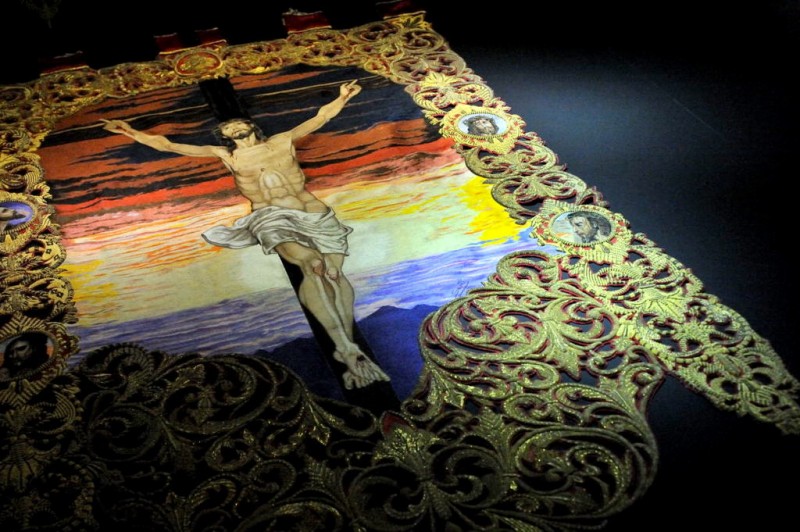
The Paso Encarnado is equally keen to highlight the fact that visitors are only centimetres from the gold and silk embroideries on display, mostly on a background of red velvet, and in some cases there is no glass casing separating them from the exhibits.
The embroidery workshop is now located on the top floor of the building and although this is not generally open to the public, visits can be arranged by prior appointment.
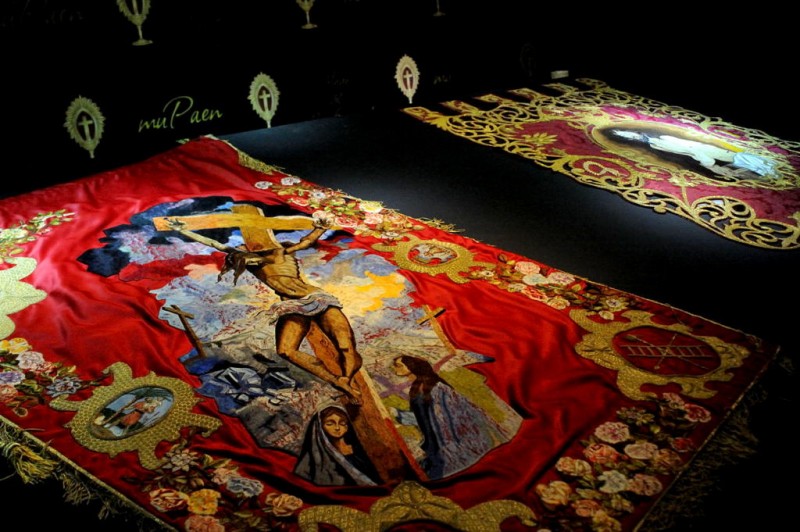
The exhibits
Among the items on display in the MuPaEn include the rich Mediterranean-baroque-style decorations worn by the officials of the Archicofradía del Santísimo Cristo de la Sangre, featuring lavish needlework using gold and silk on a red velvet base.
There is also the ornately decorated standard of the brotherhood, dedicated to the Cristo de la Penitencia, as well as the capes of Corporal and Captain of the Archicofradía. Images of the procession which is held in reverential silence at midnight on Maundy Thursday are also on display.
A second exhibition room contains the standards of the Virgen de la Soledad and the Cristo de la Sangre, as well as the dress and shawl which are worn by the Virgen de la Soledad during the processions.
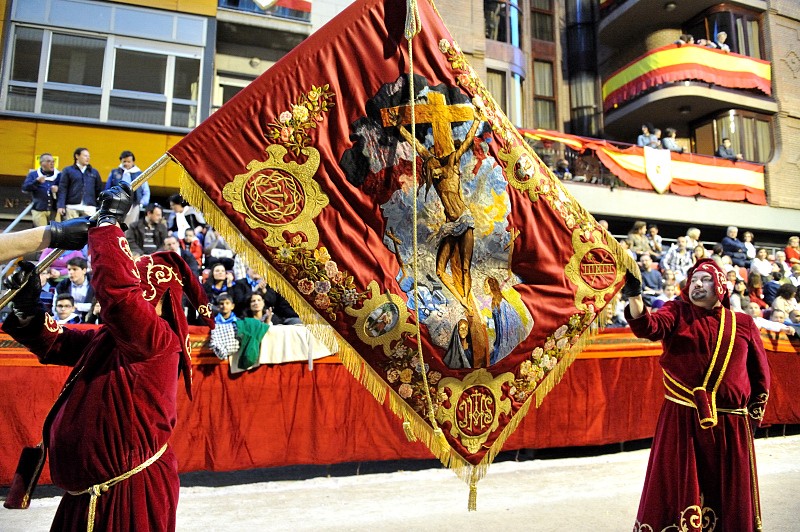
The standard of the Cristo de la Sangre is the most highly valued by the brotherhood, and shows the image of Christ on the cross at dusk embroidered in gold and silk: designed by Santiago Cruz Pallarés, it was first used in the processions in 1993, and legend has it that it is based on the image seen by two members of the brotherhood as the figure crossed the bridge which joins the district of San Cristóbal with the centre of Lorca.
As for the standard of the Virgen de la Soledad, the silk embroidery was designed by the painter Trinidad Fernández Aragón and the golden meander design is by Carmelo Miñarro Sánchez. The standard was given its first public airing in the Maundy Thursday procession of 1984.
The full biblical processionary group of the Paso Encarnado parades as follows:
- The standard of the last breath of Christ
- Nazarenes of the last breath
- The standard of the Virgen de la Soledad
- Nazarenes of the Virgen de la Soledad
- The figure of the the Virgen de la Soledad
- Children’s band
- The standard of Nuestro Señor Jesús de la Penitencia
- The flag of the Paso Encarnado
- The standard of Cristo de la Sangre
- Nazarenes of the Stations of the Cross
- The figure and tableau of Cristo de la Sangre
- Drum and cornet band
- Nazarenes and dignitaries of the Paso Encarnado
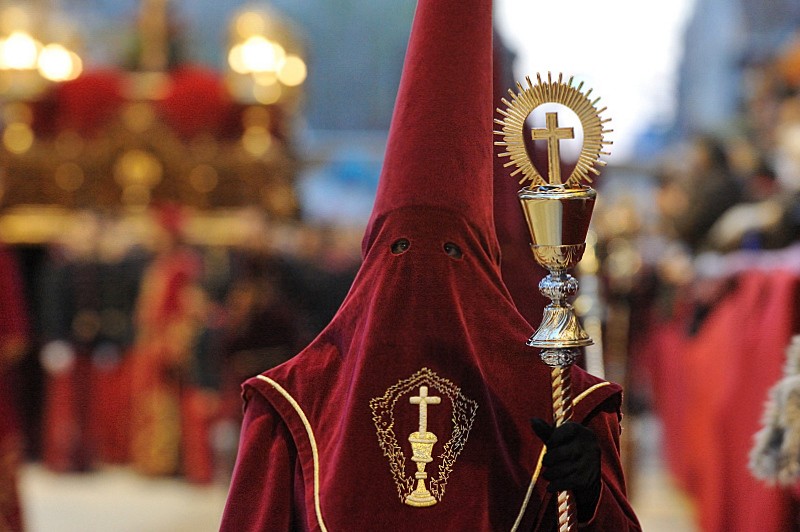
Visiting the MuPaEn
Opening times: TEMPORARILY CLOSED (December 2021).
Admission fee: 1.50€ (1.10€ for children and pensioners)
Address: Calle Eulogio Periago, 2, 30800 Lorca
Telephone: 968 400 047 / 968 472 456
Email: info@pasoencarnado.es
The museum is located on the northern side of the rambla which circles the east of the city of Lorca, in Calle Eulogio Periago, under 100 metres from the bridge of Puente Alberca.
A parking space for those of limited mobility is located 180 metres from the entrance to the museum in Calle Turbinto, while the nearest public car park is the Parking Pasarela, which contains 12 spaces for disabled drivers. Many visitors choose to park alongside the Convento de la Merced which offers a special all-day parking rate
The museum is well equipped to make it as accessible as possible for visitors of limited mobility, although there is a small step in the entry hall, and toilets for the disabled are available. Doors and floors are wheelchair-friendly.
Information leaflets are available at the Museo de Bordados del Paso Encarnado in both Spanish and English.
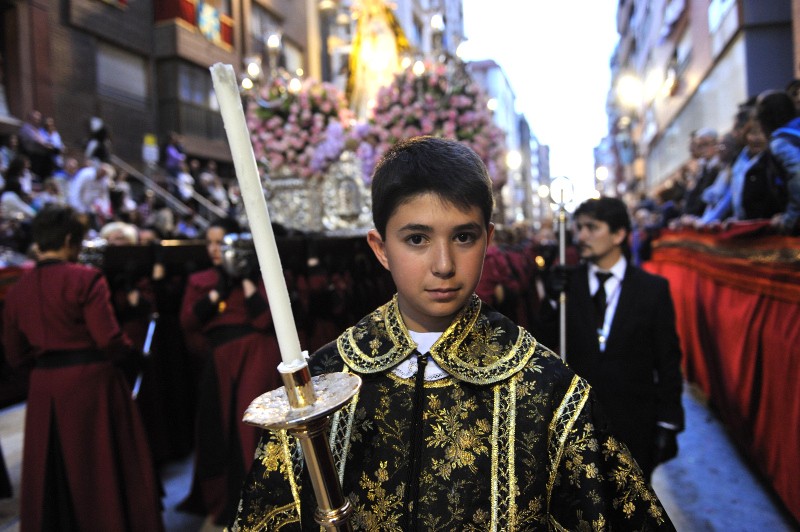
Tickets for the Semana Santa biblical parades
Tickets are sold by the Paso Azul and Paso Blanco directly via their web pages or from the offices and museums of the Cofradías.
The seat prices vary according to the position within the stands and in the street, with the cheaper tickets being those closest to the entry and exit points of the processions and the higher-priced seats located in the centre of the stands. This is because the horses and carriages run set distances, so those seats in the middle have a better view of the more spectacular runs. Click for the subject heading of Semana Santa Lorca to see the current ticketing information and further details about Semana Santa in Lorca.
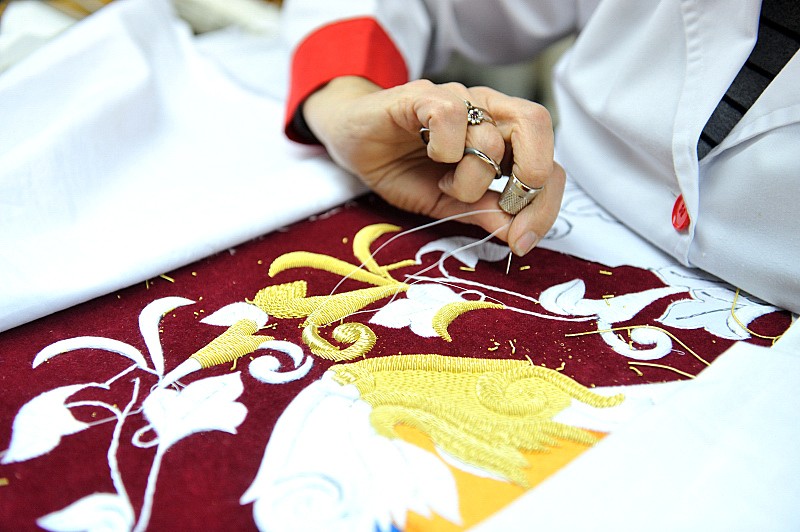
Combined entry discount (wristbands are temporarily unavailable, December 2021)
Those planning to visit several locations in Lorca are strongly advised to purchase a wristband (pulsera) from the Tourist Information Office, as it offers superb value, particularly for those able to spend time visiting all of the principal attractions. Priced at only 6.50 euros, it is valid for entrance to the La Merced visitors’ centre, Lorca castle and the four main Semana Santa and embroidery museums (the MuBBla belonging to the Paso Blanco, the Museum of the Paso Azul, the MuPaEn belonging to the Paso Encarnado and the Nicolás Salzillo “Il Maestro” museum of the Paso Morado.
In addition, significant discounts are offered on the guided tour of the Jewish quarter and the synagogue in the castle and the wristband is valid for one entry to each, and without an expiry date, so visitors can return at their leisure to visit each of the attractions over a period of time. It's fantastic value! Click for wristband information
Click for further information about visiting Lorca, including what's on agenda, what to visit, opening hours, tourist information etc: LORCA TODAY

